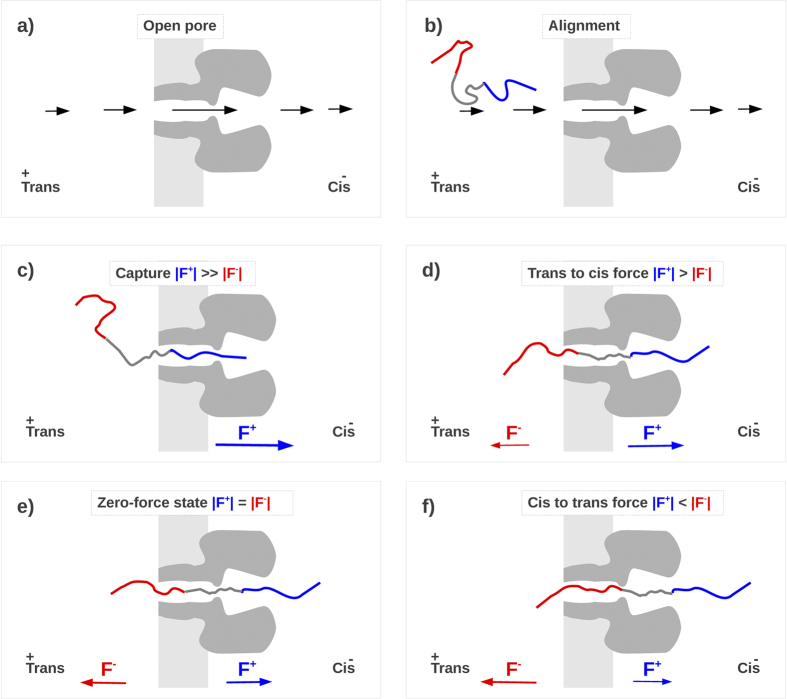Figure 6.
Qualitative description of the polypeptide capture and retention mechanisms. a) The applied voltage results in an inhomogeneous electrical field E (qualitatively sketched with black arrows) that is more intense in the pore region. b) This inhomogeneous field tends to align the peptide with the positive tail towards the trans pore mouth. c) The resulting electrostatic force (F = qeffective E, where qeffective represent the effective charge of the peptide moiety inside the pore), drives the polypeptide into the pore33,34. Assuming the electroosmotic effects are not significant35, a positive applied potential should predominately drive the positively charged end of the polypeptide into the pore. The greater the magnitude of the applied potential, the greater the chance the polypeptide will be captured. Once inside the pore, the applied potential further drives the positive end of the polypeptide into the pore. d) As soon as positive residues exit from the cis side and negative residues enters at the trans mouth, |F+| decreases while |F-| increases until the two forces approximately balance (zero net force stage, panel e). f) Further movements of the polypeptide towards the cis and trans sides (panel d) result in a net electrical forces that tend to drive the peptide back to the balanced force regime.

